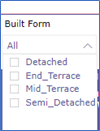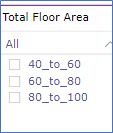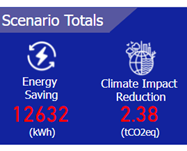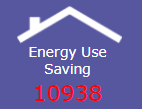ABOUT THE RETROFIT PLANNING TOOL
What can I do with the Tool?
The NHC Retrofit Planning Tool (“the Tool”) is designed for NHC members to provide a high-level understanding of the scale of the opportunity in terms of CO2e savings, associated capital costs and tenant benefits from installing energy measures.
The Tool provides high-level insight into the retrofit of low carbon measures but will not substitute more detailed whole stock studies that involve desktop analysis and site visits.
How many housing archetypes are included in the Tool?
A vital part of the Tool is the ability for users to select housing archetypes which are representative of the housing types within their local area.
There are 32 housing archetypes within the Tool which represent the majority of property types. These can be selected from the drop-down menus on row one.
House, flat and bungalow are the built types and within those types there are different floor areas, wall descriptions and built form. These can be seen from the drop-down menus.
Which energy measures are included?
There are 13 energy efficiency measures within the Tool.
The 13 measures are:
Draught Proofing, LED Lighting, loft insulation, cavity wall insulation, TRVs on radiators, cylinder thermostat and insulation, 2 channel programmer on heating, upgraded boiler to A-rated condensing, solar PV, double-glazing and insulated doors, air source heat pump, solid wall insulation, underfloor insulation.
The Tool will adjust the calculation for certain selections, for example, if the archetype selected is solid wall, the Tool will automatically eliminate a cavity wall option.
What is meant by Levels 1-10?
The Tool includes a ‘Measures by number’ Guide. The 13 measures are grouped across 10 levels so that measures which are most likely to be installed together are grouped into one.
HOW TO USE THE RETROFIT PLANNING TOOL
How do I navigate around the Tool?
The Tool allows you to model 3 scenarios on one page moving from left to right for the first scenario, make your selections for number of properties, property type, built form, floor area, wall description. Then select your preferred Starting Intervention and Target Intervention. The Tool will then calculate your selected model.
What information do I need to be able to use the Tool?
I’m having trouble using the Tool, what should I do?
If you need further help with using the Tool, please get in touch with us at enquiries@northern-consortium.org.uk
DEFINITIONS WITHIN THE RETROFIT PLANNING TOOL
What is meant by built form?
The built form can be selected from a drop-down menu and is either mid-terrace, end-terrace, semi-detached or detached.
What is meant by wall description?
Wall description can be selected from a drop-down menu and is either cavity wall, solid wall or system built.
What is meant by total floor area?
There are three options for floor area within the Tool which can be selected from a drop down menu, either 40m2-60m2 or 60 –80m2 or 80m2 –100m2
What is the Climate Impact Reduction (tCO2eq)?
Carbon dioxide equivalence (expressed as tCO2eq) is a quantity that describes, for a given mixture and amount of greenhouse gas, the amount of CO2 that would have the same global warming potential (GWP), when measured over a specified timescale (generally, 100 years).
1 tonne of CO2 could represent.
- 3 months of heating an average sized flat
- Manufacturing 1 laptop
- 199 kilos of beef production
If you require any further assistance please contact us on:
T: 0191 566 1000
(Please note: you will be redirected to our member portal ‘MyNHC’. If you are not registered you will be prompted to do so to access the NHC Retrofit Planning Tool.)










